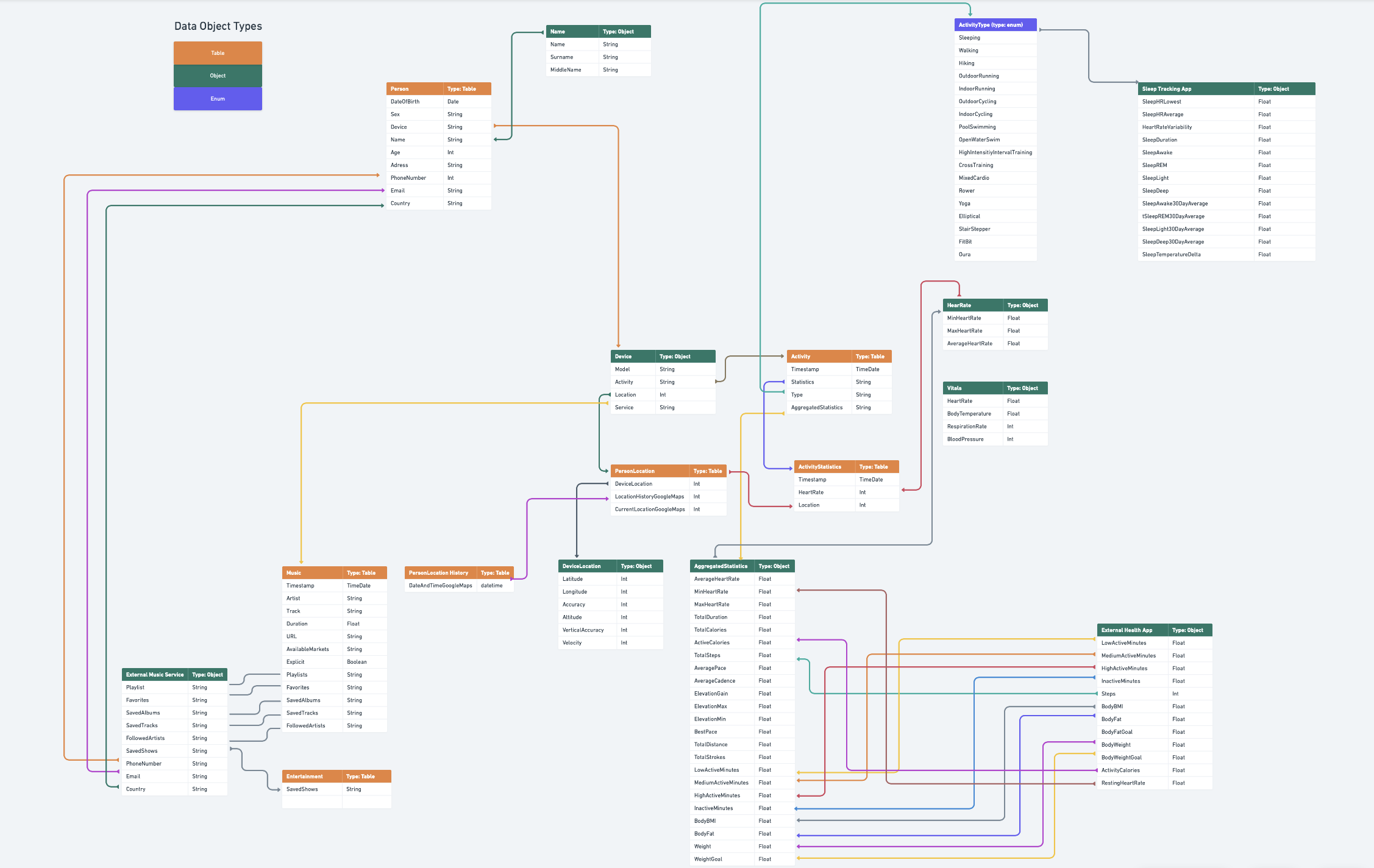# Data Modeling
This page is still a snippet, looking to be expanded.
# Core Platform Data Model
The Prifina platform has it's own data model for its own internal needs. This is a core workstream for product development and the product architecture overall, and is mainly exposed publicly in developer tools and documentations for how applications are built and ultimately connected to the Prifina platform.
# Stages of Data
Under the hood, data on the Prifina platform is accessible in a number of formats. While data is stored in the raw formats by which a user or service connection provides it, we provide technical data layers which simplify data access for developers and improve control for the users.

# Raw Data
All data, as it was imported or provided by the user, in the structure it was provided in. This is the only state in which data is statically stored, and it is kept in JSON format. Raw data is parsed by the standardization layer to provide aggregate data.
# Raw Data Model Details - TEMPLATE
For a template spreadsheet to document a new data source and it's related data model, attributes and details, you can find the Raw Data Model Details TEMPLATE here
# Aggregate Data
Raw data standardized for ease of use. It is available exclusively to Local Data and Widget Apps, and can be accessed via GraphQL queries.
# Profile Card Data
Subsets of aggregate data which can be anonymized or abstracted. Available to all applications and services which receive permission from the user. These are outlined by their corresponding Profile Cards, and allow the user to control the availability of their data and easily provide access to third-parties.
# Personal Cloud Data Model
The individuals personal data cloud is where the user brings their data. This data model for the data that exists in the users own personal data cloud, becomes the data layer that ultimately the applications that run in the Prifina environment are built on top of.
# Use of GraphQL Schema
The main work for data modeling is building the data model as a GraphQL Schema. This will allow the applications the data layer needed to interact with the personal data cloud, as well as allow a GraphQL API to be connected later in development.
# Working principles for work on data modeling.
# Source and Raw data
- Source data attributes, objects and information kept with 100% integrity unchanged, structure cleaned up to remove unnecessary formatting
- Raw data is observed and documented 100% from the source, no interpretation or opinion is inferred
- Source and raw data is main focus
# Aggregated data
Aggregated data models are very carefully planned, with at least the following principles:
- Objectively clear data that can be aggregated, is aggregated, i.e. photos
- Relatively easy to interpret
- Difficult to interpret
Points 2 and 3 consist “danger zones” and need to be dealt with very carefully.
# Visualisation of Peronal Cloud Data Model
Representation of the Personal Cloud Data Model which shows relationships between data objects and their attributes.
Whole idea is to envision the relationships between Data Objects' attributes:
- How the raw data gets unificated into same endpoints where same format will be used
- Which data value types attributes use
- In which ways more outside data could be added

# Prifina API Playground
Experiment with Prifina API Playground and make interesting queries to test the possibilities of the data model.
